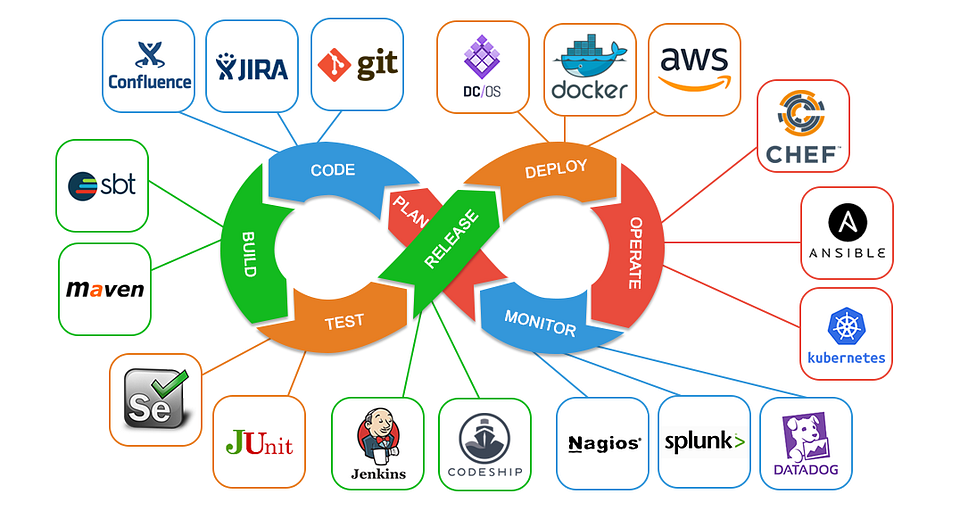Streamlining DevOps with Ansible: A Comprehensive Guide to Automation 🚚
Introduction
DevOps practices have become indispensable for modern software development, aiming to enhance collaboration, efficiency, and reliability throughout the development lifecycle. Ansible, a powerful automation tool, plays a crucial role in automating various aspects of DevOps workflows. In this comprehensive guide, we’ll delve into implementing DevOps automation with Ansible, covering essential concepts, implementation steps, code examples, and real-world use cases.
Understanding Ansible
Ansible is an open-source automation tool that simplifies configuration management, application deployment, and orchestration tasks. Key features of Ansible include:
Agentless architecture: Ansible operates over SSH, enabling remote execution without requiring any agents to be installed on target systems.
Declarative language: Ansible uses YAML-based playbooks to describe the desired state of systems, making automation tasks easily readable and understandable.
Idempotent execution: Ansible ensures that tasks can be executed multiple times without causing adverse effects, making it safe and reliable.
Extensibility: Ansible can be extended through custom modules and plugins to support integration with various platforms and technologies.
Getting Started with Ansible
Installation: Ansible can be installed on a control node, typically a developer’s workstation or a dedicated server. Installation instructions can be found on the official Ansible documentation.
Inventory Configuration: Define the inventory file (
hosts) to specify the target hosts or groups of hosts that Ansible will manage.SSH Configuration: Ensure that SSH connectivity is established between the control node and the target hosts. Ansible uses SSH for communication and remote execution.
Writing Playbooks: Create Ansible playbooks, which are YAML files containing a set of tasks to be executed on target hosts. Playbooks consist of plays, tasks, and optional handlers.
Executing Playbooks: Run Ansible playbooks using the
ansible-playbookthe command-line tool, providing the playbook file and optionally specifying the inventory file and other parameters.
Example: Creating a Simple Ansible Playbook
Let’s create a basic Ansible playbook that installs a package (nginx) on target hosts.
---
- name: Install Nginx
hosts: web_servers
become: true
tasks:
- name: Install Nginx
apt:
name: nginx
state: present
In this example, we define a playbook with a single play targeting hosts in the web_servers group. The apt module is used to install the nginx package.
Use Cases for Ansible
Infrastructure Provisioning: Automate the provisioning of virtual machines, containers, or cloud resources using Ansible’s infrastructure as code capabilities.
Configuration Management: Ensure consistency and compliance across IT infrastructure by automating configuration tasks such as package installation, file management, and service configuration.
Application Deployment: Streamline the deployment of applications and services across multiple environments, reducing manual intervention and deployment errors.
Continuous Integration/Continuous Deployment (CI/CD): Integrate Ansible into CI/CD pipelines to automate build, test, and deployment processes, enabling faster and more reliable software delivery.
Security Compliance: Enforce security policies and compliance standards by automating security hardening, patch management, and vulnerability remediation tasks.
In this guide, we’ve explored the fundamentals of implementing DevOps automation with Ansible. By leveraging Ansible’s simplicity, flexibility, and scalability, organizations can automate repetitive tasks, streamline operations, and accelerate software delivery cycles.
Whether you’re managing infrastructure, configuring applications, or orchestrating complex workflows, Ansible empowers you to achieve automation at scale and drive efficiency across your DevOps practices. Start harnessing the power of Ansible to transform your DevOps workflows and unlock new levels of productivity and agility.
This comprehensive guide provides a detailed walkthrough of implementing DevOps automation with Ansible, covering essential concepts, steps, code examples, and real-world use cases. Whether you’re new to Ansible or looking to enhance your automation capabilities, this guide equips you with the knowledge and tools to streamline your DevOps practices effectively. 🚚
Follow Roshan Sharma for more, and stay tuned for more! 🚩
Happy Learning! ✌️
